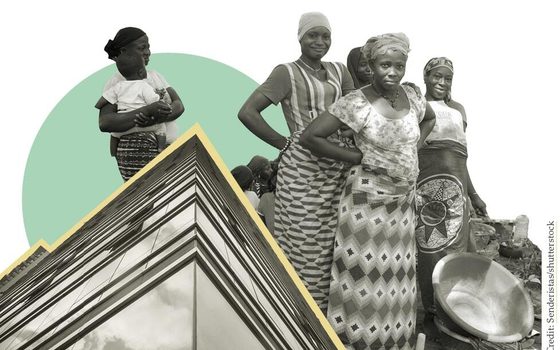Spring statement leaves 48% of all children living in families that have to make sacrifices on essentials this spring, like putting food on the table or replacing clothes and shoes
New analysis by the New Economics Foundation shows that 23.5 million people will be unable to afford the cost of living by £8,900 a year
23 March 2022
Over 34% of the population, 23.5 million people, will be unable to afford the cost of living by £8,900 on average from next month, according to new analysis by the New Economics Foundation (NEF) following the spring statement. This figure includes 7 million (48%) of all children, 1.5 million (96%) of children living in families out of work, 4 million (78%) in single-parent households, and 5.5 million (42%) in working households.
The research uses the Minimum Income Standard (MIS), which is the UK’s leading approach to measuring living standards based on need and is used to calculate the‘real’ Living Wage paid by companies like Ikea and KPMG, and football clubs like West Ham, Liverpool and Everton.
The analysis shows that the 23.5 million people in the UK projected to be living below the MIS threshold come April will include:
- 44% of families in the north-east
- 40% in Yorkshire and the Humber
- 39% in the West Midlands
- 37% in London
The research not only shows the number of people unable to afford the cost of living in each region, but also the extent to which their incomes are falling short. In the north-east, people are missing out on a good standard of living by £9,200 a year, and in the West Midlands and London by over £10,000 (£10,100 and £10,300 respectively). Couples with children will miss out on a good standard of living by £10,000 a year and single parents by £9,600 on average. This leaves families having to make impossible choices between life’s essentials, like putting food on the table or replacing clothes and shoes.
NEF is calling for the creation of a new social security system, or ‘Living Income’, to set an ‘income floor’ based on the MIS, which no one can fall below whether they are in or out of work. The research sets out steps for how to achieve a Living Income:
- Auto-enrol everyone in the UK on the universal credit system so that new payments start to be processed automatically as soon as anyone becomes eligible. This would ensure the 1.3 million people missing out on payments worth an average of £7,300 a year would receive the support they are already entitled to.
- Restore the £20 uplift for universal credit and extend to all other means-tested benefits to ensure the poorest are at least made no worse off on average by recent price rises.
- Invest a further £7 – 8bn in universal credit on top of the £20 uplift to reverse all of the cuts since 2010 and lift families closer to the MIS.
- Uprate all means-tested benefits by the latest level of inflation (rather than just inflation in the previous September) to ensure incomes keep up with price rises.
Sam Tims, Economist at the New Economics Foundation, said:
“Britain started the day with a threadbare social safety net — the worst in the OECD — and more than a third of the entire population, including almost half of all children, unable to afford the essentials. We end the day as we began, with the spring statement having done nothing to support low-income people. The chancellor is allowing the value of benefit payments to fall by more than 4% in real terms — the second real-terms cut to benefits in the last six months. A paltry £500m for a ‘Household Support Scheme’ is nowhere near enough.
“These are the moments where we need a chancellor with a long-term vision that goes beyond the next Conservative party leadership contest and instead builds an income floor beneath which no one can fall. NEF is calling for a ‘Living Income’, a social security system that guarantees everyone the minimum income they need to meet the challenges and opportunities of our fast-changing economy.”
Contact
Becky Malone, becky.malone@neweconomics.org, 07925950654
Notes to editors
The New Economics Foundation is a charitable think tank. We are wholly independent of political parties and committed to being transparent about how we are funded.
To measure the cost of living we use the Minimum Income Standard (MIS) as calculated by Loughborough University’s Centre for Research in Social Policy. Household budgets for different family types are calculated based on what the public thinks is needed for an acceptable standard of living. We can then compare these budgets to people’s incomes, creating an accurate picture of how many people will be unable to afford the cost of living.
Using the latest Bank of England forecasts and Office for National Statistics data on inflation for different items we have estimated the value of the MIS for April 2022 using budget breakdowns from the MIS in 2021. We base our inflation on the Bank of England’s forecast of 7.7% in Q2, but account for the 54% increase in the energy price cap.
Nearly half of all children will be living below a socially acceptable standard of living
Households below MIS by family type
% under MIS, 2022 |
Number of people under MIS, 2022 |
% under MIS, 2019 |
|
All |
34% |
23,500,000 |
28% |
Children |
48% |
7,000,000 |
40% |
Children in workless families |
96% |
1,500,000 |
89% |
Children in working families |
42% |
5,500,000 |
22% |
Couple with children |
36% |
8,600,000 |
31% |
Couple, no children |
19% |
2,200,000 |
16% |
Single with children |
78% |
4,000,000 |
71% |
Single, no children |
42% |
5,200,000 |
32% |
Single, pensioner |
32% |
1,700,000 |
27% |
Couple, pensioners |
17% |
1,800,000 |
12% |
Note: NEF analysis of the Family Resources Survey using the IPPR tax-benefit model, our 2022 MIS estimate is based on Bank of England forecasts and the upcoming energy price cap increase. 2019 figures taken from Households below a Minimum Income Standard: 2008/09 – 2019/20
People in London and West Midlands will experience a deeper gap in income and cost of living
Number of people and average amount under the minimum income standard (MIS) by region
Region |
Number of people under MIS (millions) |
Average annual amount under MIS |
North-east |
1,200,000 |
£9,200 |
Yorkshire and the Humber |
2,300,000 |
£9,000 |
West Midlands |
2,300,000 |
£10,100 |
London |
3,500,000 |
£10,300 |
Wales |
1,200,000 |
£8,000 |
North-west and Merseyside |
2,700,000 |
£8,500 |
East Midlands |
1,700,000 |
£7,200 |
Northern Ireland |
700,000 |
£8,000 |
Scotland |
1,800,000 |
£7,500 |
South-west |
1,800,000 |
£9,500 |
Eastern |
1,900,000 |
£7,700 |
South-east |
2,500,000 |
£8,800 |
Note: NEF analysis of the Family Resources Survey using the IPPR tax-benefit model, our 2022 MIS estimate is based on Bank of England forecasts and the upcoming energy price cap increase.
Topics Social security Inequality






